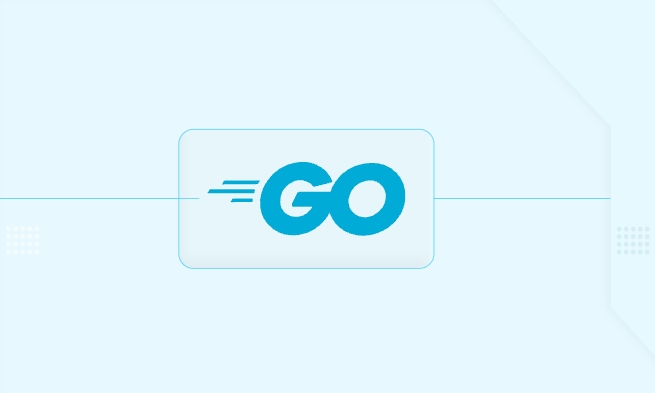Authentication middleware is a function in Golang HTTP service that is used to verify user identity before request processing. Its core is to intercept requests and decide whether to release them. It is implemented by wrapping http.HandlerFunc, and executes authentication logic before the request enters the business logic. If it fails, it returns 401, and continues to execute subsequent handlers if it succeeds. Multiple middleware can be used in combination with nested calls or wrapper functions to improve scalability and maintainability. When implementing, you need to pay attention to details such as Header format verification, path filtering, performance optimization and error information uniformity.

Handling authentication middleware in Golang HTTP is not complicated, but it requires clarification of the request process and the mechanism of the middleware. The key is to understand how to embed authentication logic into the HTTP request processing chain without interfering with the main business logic.

What is authentication middleware?
In Go's net/http package, middleware is essentially a function that receives http.HandlerFunc and returns a new http.HandlerFunc . Its purpose is to do some pre-operation before actually processing the request, such as verifying the user's identity.

A simple example is to check if there is a legitimate token before accessing certain interfaces. If the authentication fails, you can directly return 401; if successful, the subsequent handler will be executed.
func authMiddleware(next http.HandlerFunc) http.HandlerFunc {
return func(w http.ResponseWriter, r *http.Request) {
token := r.Header.Get("Authorization")
if token != "valid_token" {
http.Error(w, "Unauthorized", http.StatusUnauthorized)
Return
}
next(w, r)
}
}How to combine multiple middleware?
Go's middleware can be used overlay. You can use authentication middleware with other middleware (such as logs and stream limits), and you only need to wrap it up layer by layer.

There are two common practices:
Direct nested calls:
http.HandleFunc("/secure", authMiddleware(loggingMiddleware(myHandler)))Use middleware wrapper functions to make the structure clearer:
func applyMiddleware(h http.HandlerFunc, middleware ...func(http.HandlerFunc) http.HandlerFunc) http.HandlerFunc { for _, m := range middleware { h = m(h) } Return h } //Usage method http.HandleFunc("/secure", applyMiddleware(myHandler, loggingMiddleware, authMiddleware))
The advantage of this method is that it is highly extensible and it is easier to maintain in the future to add new middleware.
What details should be paid attention to in certification middleware?
In actual development, there are several points that are easy to ignore but are very important:
- Header format verification : Don’t just judge whether it exists. It is recommended to do basic format verification, such as
Bearer xxx. - Skip some paths : Some interfaces do not require authentication, such as
/loginor/healthz, and path filtering can be done in middleware. - Performance considerations : Try to avoid time-consuming operations in middleware, such as frequent access to the database, which can be combined with cache or asynchronous processing.
- Unified error information : It is best to keep the error information returned consistent, so that the front-end unified processing is convenient.
For example, the middleware after path filtering might look like this:
func authMiddleware(next http.HandlerFunc) http.HandlerFunc {
return func(w http.ResponseWriter, r *http.Request) {
if r.URL.Path == "/login" || r.URL.Path == "/healthz" {
next(w, r)
Return
}
token := r.Header.Get("Authorization")
if !isValidToken(token) {
http.Error(w, "Unauthorized", http.StatusUnauthorized)
Return
}
next(w, r)
}
}summary
The core of writing a certification middleware is to figure out two issues: when will the request be intercepted? How to deal with it after interception? As long as the structure is clear and the logic is clear, the middleware can be reused very flexibly. Basically all that is, the rest is to adjust and implement according to specific needs.
The above is the detailed content of How to handle authentication middleware in golang http. For more information, please follow other related articles on the PHP Chinese website!

Hot AI Tools

Undress AI Tool
Undress images for free

Undresser.AI Undress
AI-powered app for creating realistic nude photos

AI Clothes Remover
Online AI tool for removing clothes from photos.

Clothoff.io
AI clothes remover

Video Face Swap
Swap faces in any video effortlessly with our completely free AI face swap tool!

Hot Article

Hot Tools

Notepad++7.3.1
Easy-to-use and free code editor

SublimeText3 Chinese version
Chinese version, very easy to use

Zend Studio 13.0.1
Powerful PHP integrated development environment

Dreamweaver CS6
Visual web development tools

SublimeText3 Mac version
God-level code editing software (SublimeText3)

Hot Topics
 What are the implications of Go's static linking by default?
Jun 19, 2025 am 01:08 AM
What are the implications of Go's static linking by default?
Jun 19, 2025 am 01:08 AM
Go compiles the program into a standalone binary by default, the main reason is static linking. 1. Simpler deployment: no additional installation of dependency libraries, can be run directly across Linux distributions; 2. Larger binary size: Including all dependencies causes file size to increase, but can be optimized through building flags or compression tools; 3. Higher predictability and security: avoid risks brought about by changes in external library versions and enhance stability; 4. Limited operation flexibility: cannot hot update of shared libraries, and recompile and deployment are required to fix dependency vulnerabilities. These features make Go suitable for CLI tools, microservices and other scenarios, but trade-offs are needed in environments where storage is restricted or relies on centralized management.
 How does Go ensure memory safety without manual memory management like in C?
Jun 19, 2025 am 01:11 AM
How does Go ensure memory safety without manual memory management like in C?
Jun 19, 2025 am 01:11 AM
Goensuresmemorysafetywithoutmanualmanagementthroughautomaticgarbagecollection,nopointerarithmetic,safeconcurrency,andruntimechecks.First,Go’sgarbagecollectorautomaticallyreclaimsunusedmemory,preventingleaksanddanglingpointers.Second,itdisallowspointe
 How do I create a buffered channel in Go? (e.g., make(chan int, 10))
Jun 20, 2025 am 01:07 AM
How do I create a buffered channel in Go? (e.g., make(chan int, 10))
Jun 20, 2025 am 01:07 AM
To create a buffer channel in Go, just specify the capacity parameters in the make function. The buffer channel allows the sending operation to temporarily store data when there is no receiver, as long as the specified capacity is not exceeded. For example, ch:=make(chanint,10) creates a buffer channel that can store up to 10 integer values; unlike unbuffered channels, data will not be blocked immediately when sending, but the data will be temporarily stored in the buffer until it is taken away by the receiver; when using it, please note: 1. The capacity setting should be reasonable to avoid memory waste or frequent blocking; 2. The buffer needs to prevent memory problems from being accumulated indefinitely in the buffer; 3. The signal can be passed by the chanstruct{} type to save resources; common scenarios include controlling the number of concurrency, producer-consumer models and differentiation
 How can you use Go for system programming tasks?
Jun 19, 2025 am 01:10 AM
How can you use Go for system programming tasks?
Jun 19, 2025 am 01:10 AM
Go is ideal for system programming because it combines the performance of compiled languages ??such as C with the ease of use and security of modern languages. 1. In terms of file and directory operations, Go's os package supports creation, deletion, renaming and checking whether files and directories exist. Use os.ReadFile to read the entire file in one line of code, which is suitable for writing backup scripts or log processing tools; 2. In terms of process management, the exec.Command function of the os/exec package can execute external commands, capture output, set environment variables, redirect input and output flows, and control process life cycles, which are suitable for automation tools and deployment scripts; 3. In terms of network and concurrency, the net package supports TCP/UDP programming, DNS query and original sets.
 What are functional options patterns in Go, and when are they useful for constructor design?
Jun 14, 2025 am 12:21 AM
What are functional options patterns in Go, and when are they useful for constructor design?
Jun 14, 2025 am 12:21 AM
FunctionaloptionsinGoareadesignpatternusedtocreateflexibleandmaintainableconstructorsforstructswithmanyoptionalparameters.Insteadofusinglongparameterlistsorconstructoroverloads,thispatternpassesfunctionsthatmodifythestruct'sconfiguration.Thefunctions
 How do I call a method on a struct instance in Go?
Jun 24, 2025 pm 03:17 PM
How do I call a method on a struct instance in Go?
Jun 24, 2025 pm 03:17 PM
In Go language, calling a structure method requires first defining the structure and the method that binds the receiver, and accessing it using a point number. After defining the structure Rectangle, the method can be declared through the value receiver or the pointer receiver; 1. Use the value receiver such as func(rRectangle)Area()int and directly call it through rect.Area(); 2. If you need to modify the structure, use the pointer receiver such as func(r*Rectangle)SetWidth(...), and Go will automatically handle the conversion of pointers and values; 3. When embedding the structure, the method of embedded structure will be improved, and it can be called directly through the outer structure; 4. Go does not need to force use getter/setter,
 What are interfaces in Go, and how do I define them?
Jun 22, 2025 pm 03:41 PM
What are interfaces in Go, and how do I define them?
Jun 22, 2025 pm 03:41 PM
In Go, an interface is a type that defines behavior without specifying implementation. An interface consists of method signatures, and any type that implements these methods automatically satisfy the interface. For example, if you define a Speaker interface that contains the Speak() method, all types that implement the method can be considered Speaker. Interfaces are suitable for writing common functions, abstract implementation details, and using mock objects in testing. Defining an interface uses the interface keyword and lists method signatures, without explicitly declaring the type to implement the interface. Common use cases include logs, formatting, abstractions of different databases or services, and notification systems. For example, both Dog and Robot types can implement Speak methods and pass them to the same Anno
 How do I use the io package to work with input and output streams in Go?
Jun 20, 2025 am 11:25 AM
How do I use the io package to work with input and output streams in Go?
Jun 20, 2025 am 11:25 AM
TheGoiopackageprovidesinterfaceslikeReaderandWritertohandleI/Ooperationsuniformlyacrosssources.1.io.Reader'sReadmethodenablesreadingfromvarioussourcessuchasfilesorHTTPresponses.2.io.Writer'sWritemethodfacilitateswritingtodestinationslikestandardoutpu






